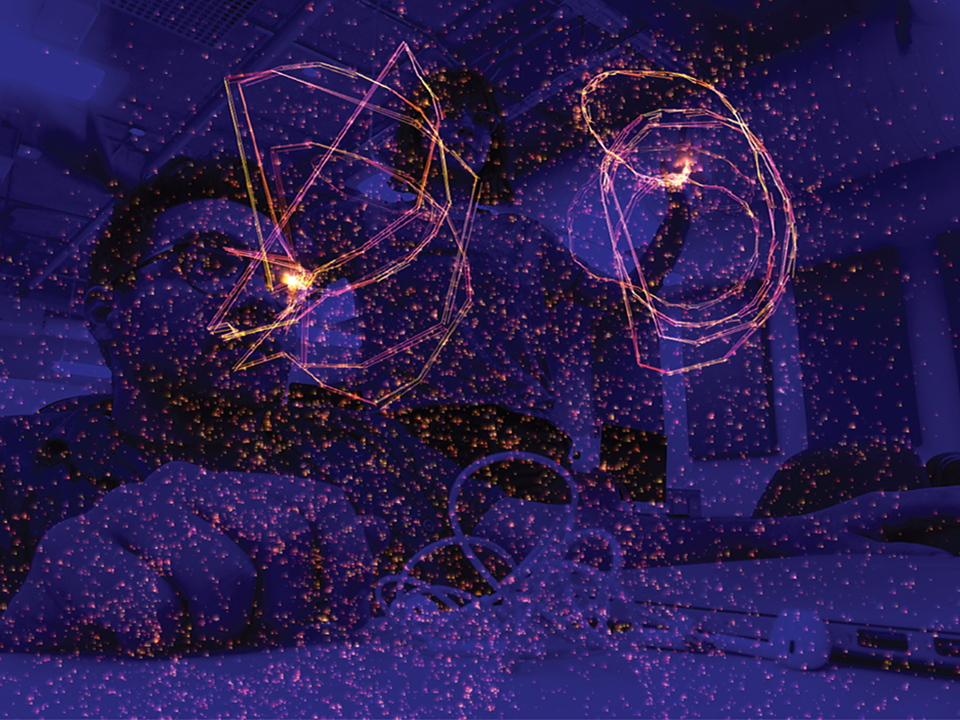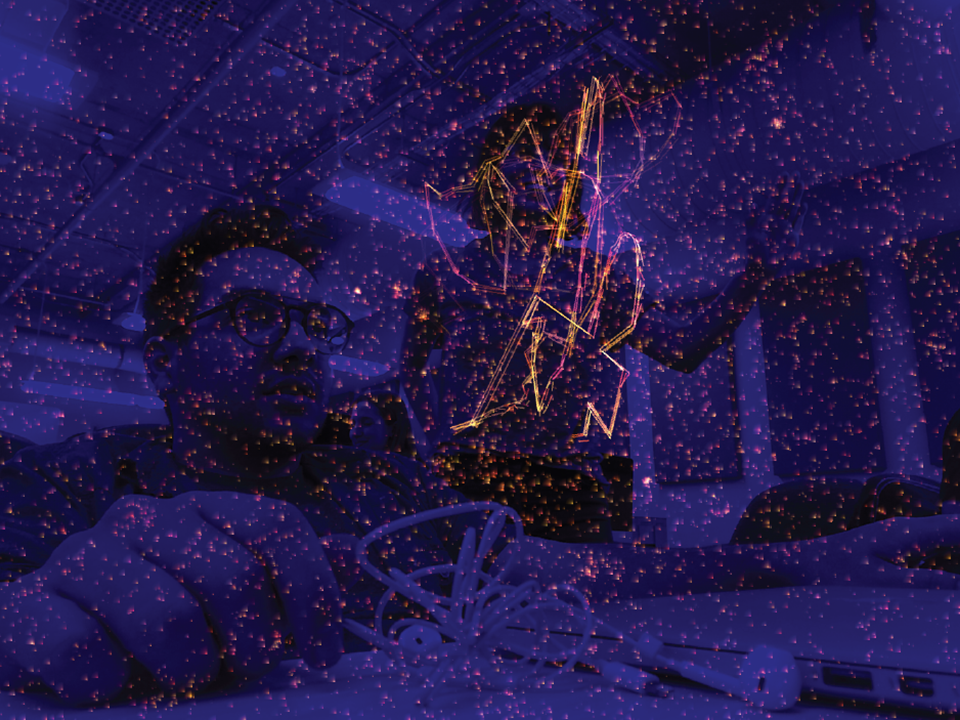An interactive installation that allows users to “paint” with light using only their hands. Collaboration With Jean Paul Augurusa.
To create an interactive installation that can be enjoyed by a wide range of users in a public space setting.
An interactive installation that allows users to “paint” with light using only their hands. Collaboration With Jean Paul Augurusa.
To create an interactive installation that can be enjoyed by a wide range of users in a public space setting.
An interactive installation that allows users to “paint” with light using only their hands. Collaboration With Jean Paul Augurusa.
To create an interactive installation that can be enjoyed by a wide range of users in a public space setting.
We wanted to create something that virtually everyone could relate to, something instinctual that transcended not only demographics, but also culture and language. So we went back to the days of early humans to try to find that special something, and nothing in evolutionary history brought us humans together more than fire. Being able to create and use fire was what set us humans apart from any other species and gave us an evolutionary edge. Our relationship with fire is ingrained deep in our psyche.
With fire as our main theme, we thought of ways of implementing it in an installation. We wanted something fun that would make people want to stop and play with, and that’s how we came up with the concept of “light painting”. Inspired by fireworks, we created an interactive drawing tool that is reminiscent of long exposure photographs of people playing with sparklers. We used a dark blue tinted background to create a feeling of “darkness” to contrast with the bright orange drawings.
April 2019
2 Weeks
Processing + Kinect
Design + Programming
To make it as instinctual and natural as possible, we used a Kinect to detect the user's hand movements, effectively turning the user's hands into “brushes”.
Since a Kinect can also sense when the user's hands are open or closed, we used these gestures to our advantage by allowing the user to better control their painting: The user can open their hands to paint or close them to “finish” their painting.
Just like light and fire, the drawings eventually dissipate allowing the user to create something new.
We wanted to create something that virtually everyone could relate to, something instinctual that transcended not only demographics, but also culture and language. So we went back to the days of early humans to try to find that special something, and nothing in evolutionary history brought us humans together more than fire. Being able to create and use fire was what set us humans apart from any other species and gave us an evolutionary edge. Our relationship with fire is ingrained deep in our psyche.
With fire as our main theme, we thought of ways of implementing it in an installation. We wanted something fun that would make people want to stop and play with, and that’s how we came up with the concept of “light painting”. Inspired by fireworks, we created an interactive drawing tool that is reminiscent of long exposure photographs of people playing with sparklers. We used a dark blue tinted background to create a feeling of “darkness” to contrast with the bright orange drawings.
April 2019
2 Weeks
Processing + Kinect
Design + Programming
To make it as instinctual and natural as possible, we used a Kinect to detect the user's hand movements, effectively turning the user's hands into “brushes”.
Since a Kinect can also sense when the user's hands are open or closed, we used these gestures to our advantage by allowing the user to better control their painting: The user can open their hands to paint or close them to “finish” their painting.
Just like light and fire, the drawings eventually dissipate allowing the user to create something new.
We wanted to create something that virtually everyone could relate to, something instinctual that transcended not only demographics, but also culture and language. So we went back to the days of early humans to try to find that special something, and nothing in evolutionary history brought us humans together more than fire. Being able to create and use fire was what set us humans apart from any other species and gave us an evolutionary edge. Our relationship with fire is ingrained deep in our psyche.
With fire as our main theme, we thought of ways of implementing it in an installation. We wanted something fun that would make people want to stop and play with, and that’s how we came up with the concept of “light painting”. Inspired by fireworks, we created an interactive drawing tool that is reminiscent of long exposure photographs of people playing with sparklers. We used a dark blue tinted background to create a feeling of “darkness” to contrast with the bright orange drawings.
April 2019
2 Weeks
Processing + Kinect
Design + Programming
To make it as instinctual and natural as possible, we used a Kinect to detect the user's hand movements, effectively turning the user's hands into “brushes”.
Since a Kinect can also sense when the user's hands are open or closed, we used these gestures to our advantage by allowing the user to better control their painting: The user can open their hands to paint or close them to “finish” their painting.
Just like light and fire, the drawings eventually dissipate allowing the user to create something new.





